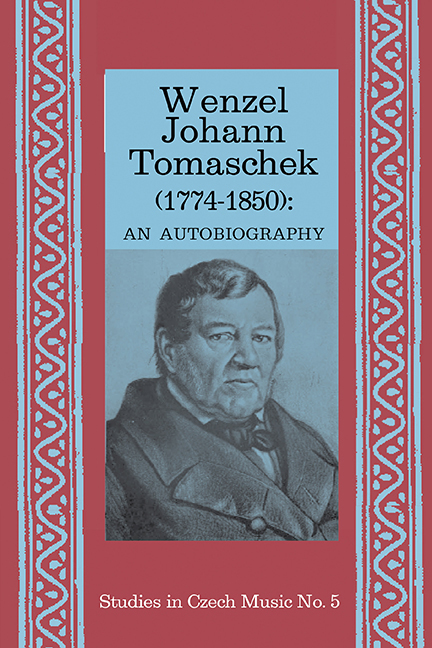Book contents
Chapter Eleven
Summary
Immediately after the beginning of 1818 I wrote: Six Eglogues pour le Pianoforte, Oeuv. 63 – which were soon published by Hofmeister in Leipzig. Not long thereafter the “Four Lieder” with Pianoforte accompaniment appeared as op. 64 from Rudel in Prague.
A work of art, called into life through objective consideration, stands upright by itself despite the most lopsided judgment of the time, while all musical works that pay homage to the bad taste of the time share the destiny of ephemera. That I am not in error in this regard is something I am persuaded by daily by my eclogues and rhapsodies, which continue to be sought out by solid pianists. Led by such an opinion, which is certainly correct, I looked, however, to the realm of poetry, in order to see, whether there might not still be much therein that might be used by music? And look! – It was the dithyramb with its lyrical power, that I chose to be musically adapted, and without delay I wrote “Tre Dithyrambi per il Pianoforte”, which appeared as op. 65 from Marco Berra.
The first Dithyramb has a Roman character, solid, like the Romans, while the second evokes the mildness and grace of the Greeks; in the third both styles are melted into one.
Having learned, that among the throng of pianists there are very few who know what a dithyramb is, caused me to preface the work with a short explanation of the dithyramb in German and Italian, whereby I elucidated the performance of this composition in a few words, and it is very unjust that the publisher omitted the explanation in the second edition, probably out of a desire to save money, and thus made the work incomprehensible for many.
That, by the way, the player might thus display his brilliant bravura and soulful performance, must be clear to anyone at the first glance. Berra told me that this work often is requested under the title: Tomaschek's Tyrannen [tyrants] for the pianoforte. This is something that certainly can amuse many, but for the composer concerned such raw ignorance can only be distressing, and confirm his opinion regarding the lack of literary education of most pianists.
- Type
- Chapter
- Information
- Wenzel Johann Tomaschek (1774–1850)Autobiography, pp. 111 - 116Publisher: Boydell & BrewerPrint publication year: 2017



